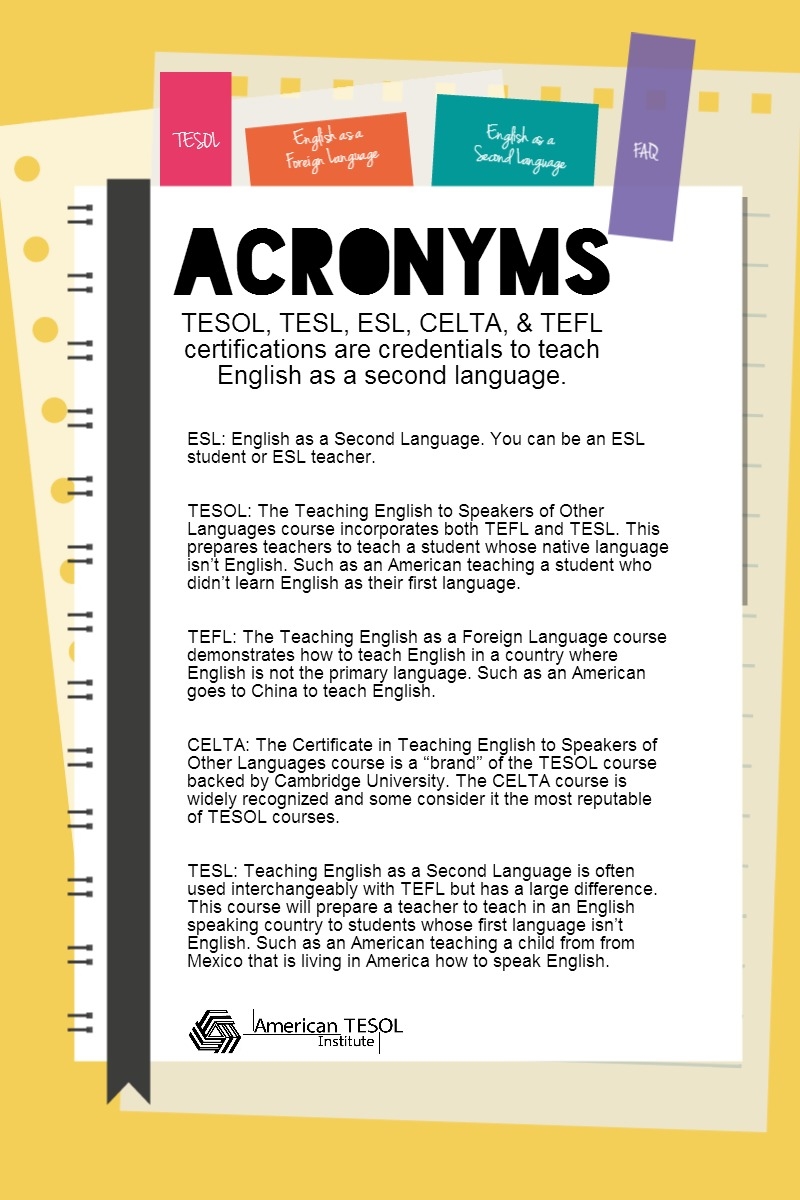For teachers stepping into the world of English language instruction, the sea of acronyms can feel overwhelming. TESOL, ESL, TEFL—what do they all mean, and how do they differ? While these terms are often used interchangeably, each carries its own nuances and significance. Understanding these distinctions can help TESOL teachers navigate their professional journey and better tailor their teaching approaches.
What is TESOL?
TESOL stands for Teaching English to Speakers of Other Languages. It is an umbrella term that encompasses both ESL (English as a Second Language) and EFL (English as a Foreign Language). TESOL generally applies to teaching English to non-native speakers, regardless of whether they are learning in an English-speaking country or abroad.
- Key Characteristics of TESOL:
- Broad scope covering both ESL and EFL contexts.
- Focuses on teaching methodologies, cultural sensitivity, and language acquisition.
- Often associated with certification programs that prepare teachers for global opportunities.
Fun Fact: TESOL International Association is a leading organization supporting English language teachers worldwide, hosting conferences and providing resources for professional development.
What is ESL?
ESL stands for English as a Second Language. This term refers to teaching English to non-native speakers who live in an English-speaking country. ESL learners often need English for everyday communication, work, or academic purposes in their new environment.
- Key Characteristics of ESL:
- Focuses on helping learners integrate into an English-speaking society.
- Often includes survival English, such as how to navigate public transportation or fill out forms.
- Encourages cultural integration alongside language learning.
Example in Practice: In an ESL class in the United States, students might learn how to write resumes, order food at a restaurant, or understand regional accents.
What is TEFL?
TEFL stands for Teaching English as a Foreign Language. This term refers to teaching English to non-native speakers in countries where English is not the primary language. TEFL is most commonly associated with teaching abroad, such as in Spain, China, or Brazil.
- Key Characteristics of TEFL:
- Focuses on English for academic, business, or general communication purposes.
- Often taught in classrooms where English is treated as an academic subject.
- Requires cultural adaptation to different teaching environments.
Example in Practice: A TEFL teacher in Japan might focus on conversational English, teaching students how to introduce themselves or participate in international business meetings.
TESOL vs. ESL vs. TEFL: The Key Differences
| Acronym | Context | Learner Needs | Teaching Focus |
|---|---|---|---|
| TESOL | Global | Broad | Methodologies for all learners |
| ESL | English-speaking countries | Integration and daily communication | Practical English and cultural adaptation |
| TEFL | Non-English-speaking countries | Academic or professional use | Language instruction tailored to local contexts |
Choosing the Right Path for Your Career
- TESOL Certification: Ideal for teachers seeking flexibility to work in both ESL and EFL contexts. It’s a comprehensive option for those wanting to teach globally.
- ESL Certification: Best for teachers planning to work in English-speaking countries, focusing on helping immigrants and refugees.
- TEFL Certification: Perfect for adventurers eager to teach in non-English-speaking countries and experience diverse cultures.
Fun Fact: Many TESOL programs include both ESL and TEFL training, providing maximum versatility for teachers.
Practical Tips for TESOL Teachers
- Understand Your Audience: Knowing whether your students are in an ESL or EFL context can help you design lessons that meet their specific needs.
- Embrace Cultural Sensitivity: Each context brings unique cultural challenges. Learning about your students’ backgrounds can enhance their learning experience.
- Build Practical Skills: In an ESL setting, focus on everyday English. For TEFL, prioritize structured lessons with clear learning outcomes.
- Stay Certified: Certification in TESOL, ESL, or TEFL boosts your credentials and opens up teaching opportunities worldwide.
Conclusion
Navigating the world of English language teaching acronyms doesn’t have to be daunting. Whether you’re pursuing TESOL for its global applicability, diving into ESL to support immigrants in English-speaking countries, or embarking on a TEFL adventure abroad, understanding these terms will help you chart a fulfilling career path. With the right certification and a passion for teaching, you can make a meaningful impact on students worldwide.
Remember: Each acronym represents a unique teaching context, but they all share a common goal—bridging cultures and empowering learners with the gift of English.




